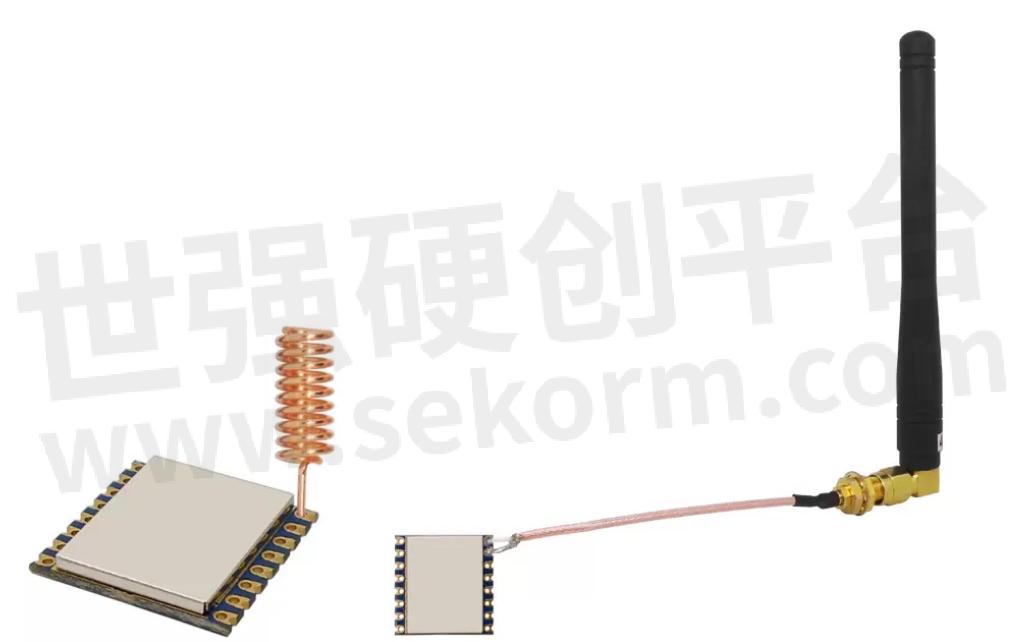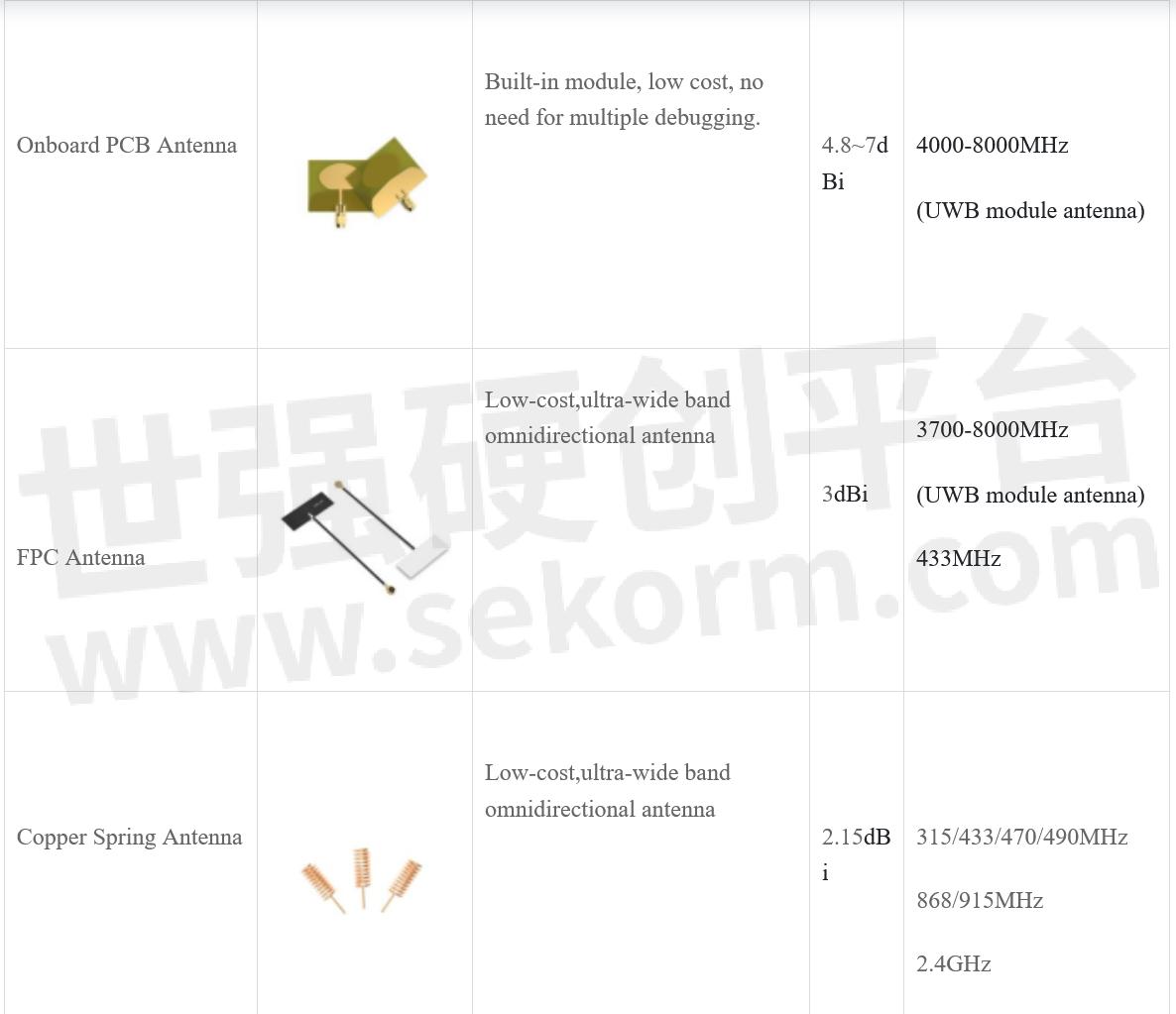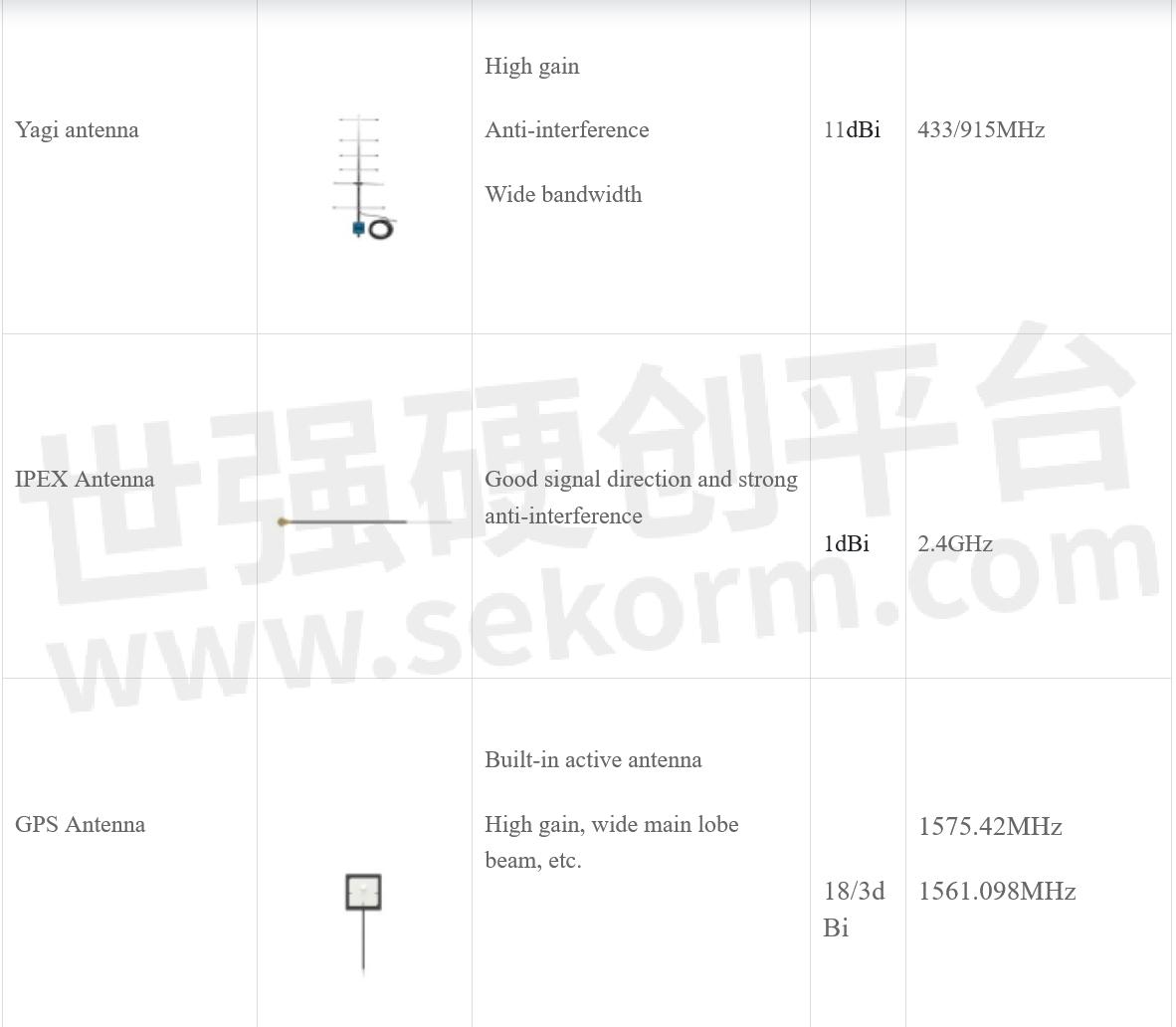Introduction to Several Common Antennas for Wireless Communications

Antennas are crucial for wireless modules. Suitable antennas can optimize the communication network and increase the range and reliability of communication. The selection of antennas has a great impact on the data communication of final module . An inappropriate antenna will lead to a decrease in communication quality. For different market applications, the material, placement method, and performance of the antenna are also very different. The following is a brief example of several antennas from NiceRF Company.

Rod Antenna: The rod antenna is a common form of antenna. Its principle is based on placing a conductor rod in a magnetic field to achieve signal reception and transmission. It is widely used in wireless communication systems.
The sucker antenna, also known as a suction antenna or suction antenna scanner, is a special type of antenna. It typically consists of a suction cup and an antenna, where the suction cup can secure the antenna to an object or surface, thereby achieving better signal reception and transmission.
PCB antenna is an antenna form directly printed on a PCB (Printed Circuit Board). This type of antenna plays an increasingly important role in modern wireless communication devices, especially in mobile devices, IoT devices, and wireless sensor networks. Due to its compact size, lightweight, and low cost, it has been widely used.
FPC (Flexible Printed Circuit) antenna is a flexible antenna made of flexible materials, suitable for scenarios where the antenna needs to bend or conform to specific shapes. Its advantages include high flexibility, the ability to conform to different surface shapes, and it is often used in devices with special shape requirements, such as wearable devices or uniquely shaped sensors.
The spring antenna is a type of helical antenna. Its primary function is to radiate and receive radio waves. Due to its low cost, small size, ease of installation, good VSWR (Voltage Standing Wave Ratio) performance, resistance to vibration and aging, the spring antenna is increasingly used in the field of radio communication.
The Yagi antenna consists of an active element (usually a folded dipole), a passive reflector, and several passive directors arranged in parallel. Invented in the 1920s by Hidetsugu Yagi and Shintaro Uda of Tohoku University in Japan, it is known as the "Yagi-Uda antenna" or simply "Yagi antenna."
IPEX antenna is a new high-performance antenna with high gain and frequency response. It can achieve optimal performance in different frequency bands and environments, including both indoor and outdoor settings. The IPEX antenna is widely used in mobile communications, smart homes, the Internet of Things (IoT), and vehicle networking.
GPS antenna is used to receive satellite signals for positioning or navigation. Receiving these signals requires antenna. GPS satellite signals are divided into L1 and L2, with frequencies of 1575.42 MHz and 1228 MHz, respectively. L1 is an open civilian signal with circular polarization and a signal strength of around -166 dBW, which is relatively weak. These characteristics necessitate a specialized antenna for receiving GPS signals.



Antenna Usage Considerations:
The following principles should be followed when using the antenna to ensure the best communication distance of the module:
1. Avoid placing the antenna close to the ground , and keep it away from obstacles as far as possible.
2. If using sucker antenna, try to keep the lead wire straight and ensure the suction cup base is attached to a metal surface.
- +1 Like
- Add to Favorites
Recommend
- A Comprehensive Overview of Wireless Modules: Exploring their Essence in Modern Technology
- Feasycom Showcases Latest Wireless Modules at the UK’s Largest Electronics Exhibition
- What Does the Watchdog Function Mean in Wireless Modules?
- Accelerate Smart Home Wireless Product Development With The Matter-powered Silicon Labs Mgm240 Wireless Modules
- Keysight Selected by Fibocom to Perform Comprehensive Testing of Wireless Modules Developed for 5G and IoT Applications
- Best Partner for Wireless Modules: A Comprehensive Antenna Selection Guide
- Comparison of Functions and Applicability of 433MHz and 2.4GHz Wireless Modules
- Wi-Fi 6 Module 802.11ax: Shaping the Future of Wireless
This document is provided by Sekorm Platform for VIP exclusive service. The copyright is owned by Sekorm. Without authorization, any medias, websites or individual are not allowed to reprint. When authorizing the reprint, the link of www.sekorm.com must be indicated.





























































































































































































































































































































































































































































































































































































































































































































































































































































































